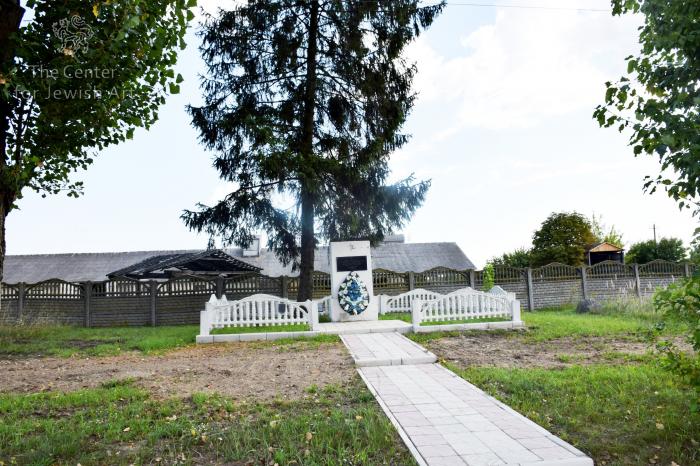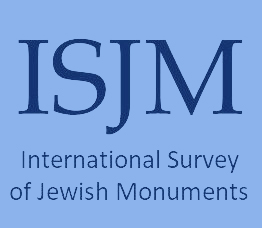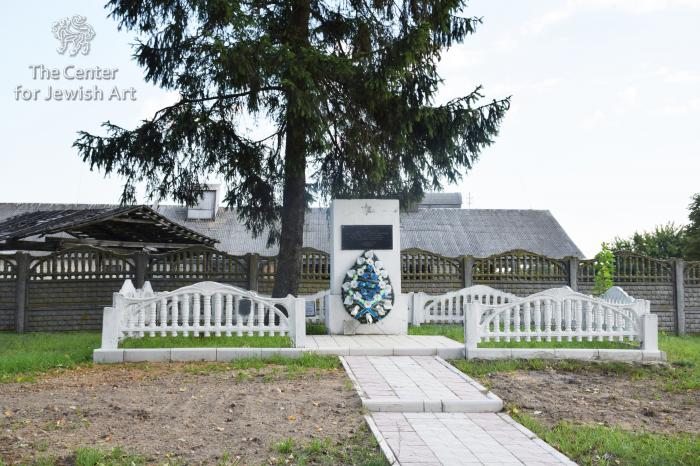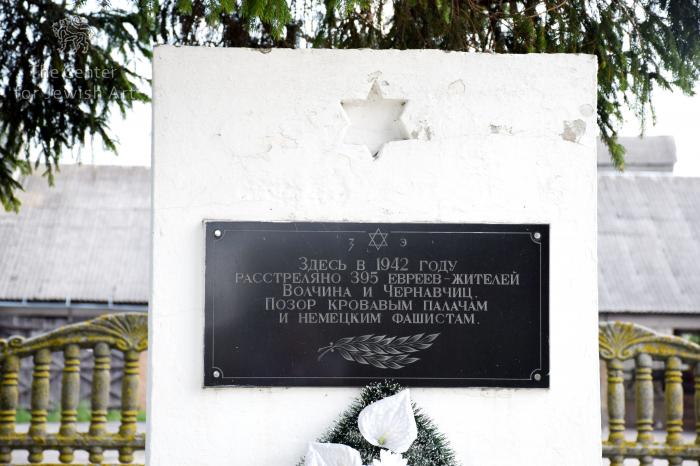Obj. ID: 34066 Monument at the Killing Site in Wolczyn (Volchin), Belarus, 2004

Who is Commemorated?
395 Jews of Wolczyn (Volchin) and Čarnaŭčycy (Cherniavchitsy), killed on September 22, 1942.
Description
The monument at the killing site in Wolczyn (Volchin) is shaped like an upright stele that stands on the podium. There are Magen David and the memorial plaque on its surface.
The plaque bears not only a Russian inscription but also a depiction of Magen David and two branches or probably two spikelets of wheat.
The monument is surrounded by a fence. A paved path leads to it.
A separate memorial plaque, dedicated to the Zelcer family murdered on the site, was added later (in 2006) by the descendants.
Near the monument, there is another memorial plaque dedicated to one of the murdered families. The stars of David are depicted on it.
Inscription
On the monument:
In Russian
З Э
Здесь в 1942 году
расстреляно 350 евреев-жителей
Волчина и Чернавчиц.
Похор кровавым палачам
и немецким фашистам.
Translation: Z E / Here in 1942 / were shot to death 395 Jews-citizens / of Wolczyn (Volchin) and Čarnaŭčycy (Cherniavchitsy). / Shame on the bloody executioners / and German Fascist.
On the separate plaque:
In English
In remembrance of
the Zelcer family
massacred alongside all the Jewish Families
of Volchin
on September 22, 1942
"May there be abundant peace from heaven
and life for us and all of Israel". Amen
Dedicated by Terry and Felicity Zelcer
of New Zealand who visited Volochin
30 August 2006
In memory of his grandfather
Lejb Zelcer
Commissioned by
The monument is commissioned by the government authorities.
The separate plaque is commissioned by the victims' relatives.
Wolczyn (Volchin) was occupied by German troops on June 22, 1941. Then most of the Jews, according to some sources, were taken to the ghetto in Briest (Brest) [Yad Vashem: The Untold Stories]. The remaining Jews were imprisoned in the local ghetto together with 350 Jews from Čarnaŭčycy (Cherniavchitsy) village who were taken to the Wolczyn (Volchin) [Yad Vashem: Murder story].
On September 22, 1942, the ghetto inmates were collected on the pretext of being relocated to the larger ghetto in Vysokaje (Vysokaye). Instead, they were marched to the area of a former gravel pit located 200 meters from the village. There, they were forced to strip naked and then, in groups of three to five people, were taken to the edge of two pits that had previously served as garbage pits. There, the ghetto prisoners were shot to death by Germans and the local police force. Most of them were elderly people, women, and young children [Murder story].
The memory of the local Holocaust victims was not commemorated till July 1, 2004, when, as a part of the celebration of Independence Day of the Republic of Belarus and the 60th Anniversary of when Belarus became free from the German Nazis, the present monument was unveiled [The Brest-Belarus Group].
Today, the monument is a place of commemorative ceremonies.
"My Grandfather’s Shtetl," The Brest-Belarus Group., https://brest-belarus.org/br/Volchin/ZelcerVisit/Site_JewishMemorial.i.html (accessed February 7, 2024)
"Wolczyn" and "Murder story of Wolczyn Jews in the Gravel Pit near Wołczyn,"
Untold Stories - Murder Sites of Jews in Occupied Territories of the USSR (Yad Vashem project), https://collections.yadvashem.org/en/untold-stories/community/14622276-Wolczyn, https://collections.yadvashem.org/en/untold-stories/killing-site/14627395-Gravel-Pit-near-Wołczyn.







